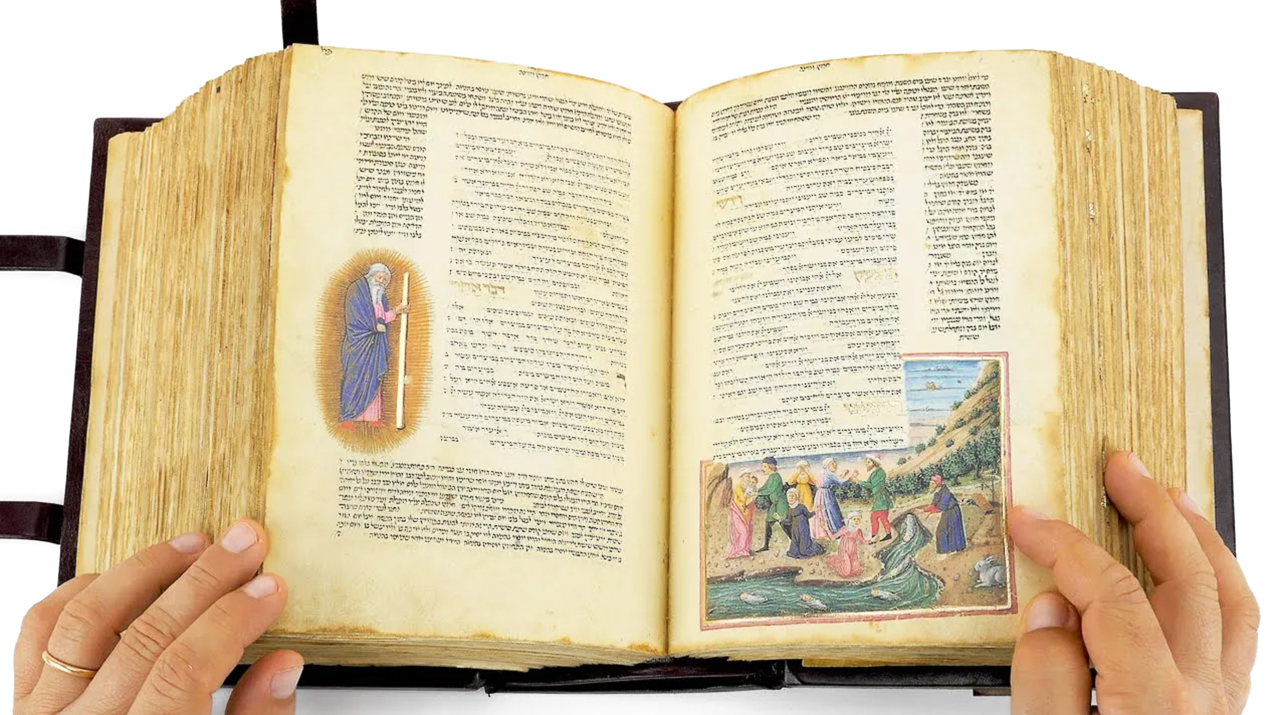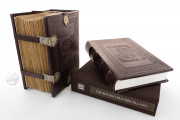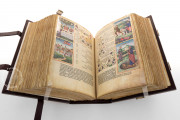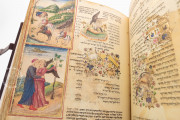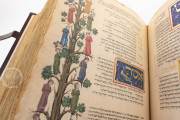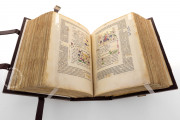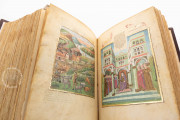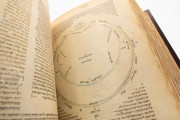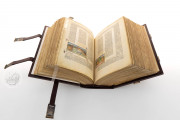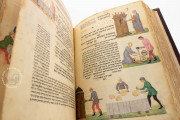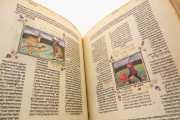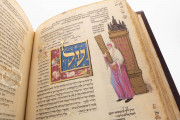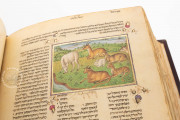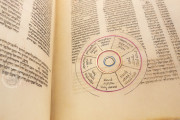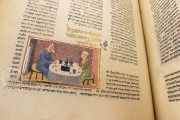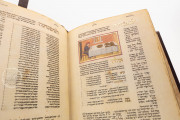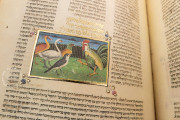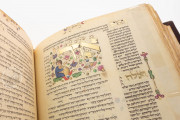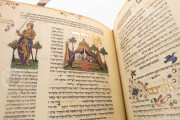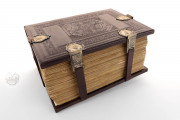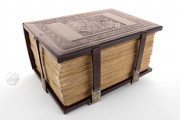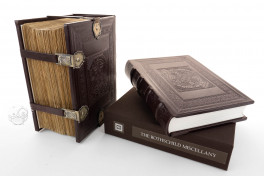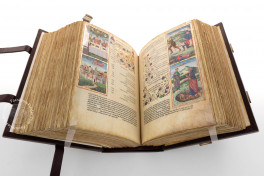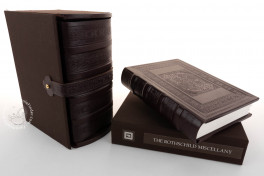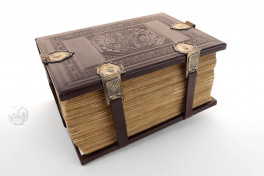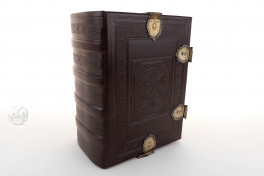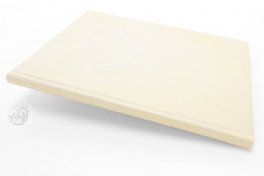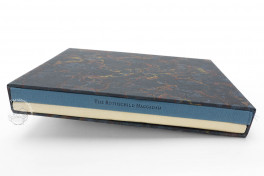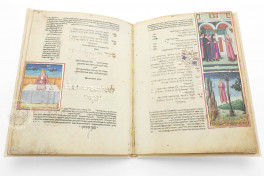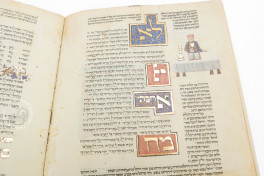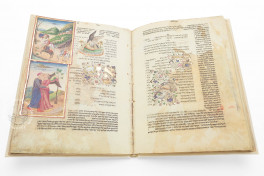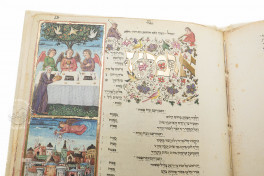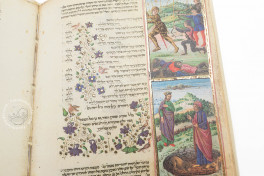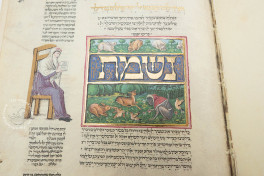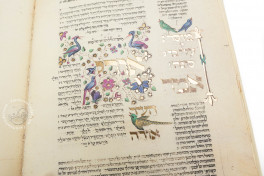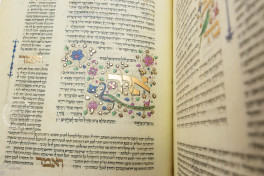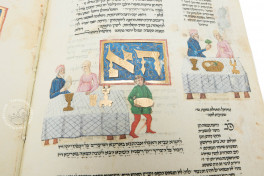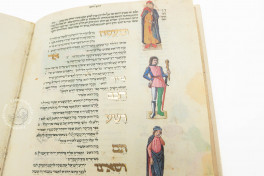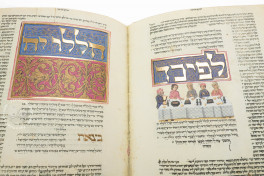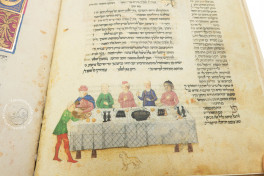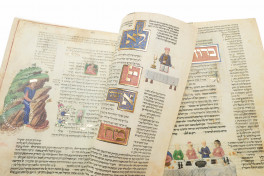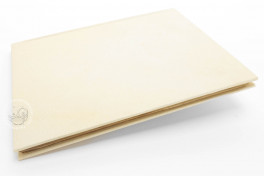The Rothschild Miscellany is a virtual library of Hebrew texts between two covers. Created in Italy in the third quarter of the fifteenth century for Moses ben Jekutiel ha-Cohen, the manuscript comprises seventy works, including Jewish biblical and liturgical texts and secular historical, legal, and philosophical texts. It is a sumptuous production, with generous use of gold in writing and images. Its illumination includes two full-page miniatures and almost 200 smaller miniatures and vignettes, many depicting ritual activities of contemporary Jews.
Most of the manuscript's pages host more than one text, with one written in Hebrew Square Script in the center and another written in smaller semi-cursive in the margins. Although the texts are usually thematically related, the marginal texts are not necessarily subordinate to the larger text in the center.
Two Artistic Teams
Two groups of painters illuminated the manuscript. One was responsible for illuminating the core section, which has as its primary text a Jewish prayer book (siddur) and a history of the Jews from biblical times to the destruction of the Second Temple (fols. 79v-298r). The other team of artists illuminated the biblical books of Psalms, Job, and Proverbs with commentary by Rashi (fols. 1-78) and a vast compendium of varied moralizing and didactic texts and biblical commentary (fols. 298v-472v).
There is no scholarly consensus as to where the illuminators trained or worked. Aspects of their art have been compared to contemporary painting from Ferrara, the Veneto, and Lombardy. They could not read Hebrew. A system of Arabic numerals in the margins was used to instruct the artists about what subject should be painted in the adjacent space reserved by the scribes for a miniature or vignette.
Two Supremely Talented Painters
Among the many artists of the first group was one who created striking images of animals (fols. 79v-80v, 84r, and 115r). The work of a painter of the second group is distinguished by the quiet dignity of his figures and gold and black clouds. He painted the portrait of the Israelite king David as the author of the Psalms (fol. 44v) and the scene of the woman of Proverbs 31:28 whose children declare her happy and whose husband praises her (fol 78v).
Two Full-Page Miniatures
The Miscellany's two full-page miniatures are on facing pages at the end of the biblical book of Job. Job is shown after his ordeal, seated in a courtyard with his children (fol. 64v). The text on two scrolls above the scene explains that the Lord has bestowed on Job twice what he had before (Job 42:10). Illustrating Job's restored material wealth is an expansive farming scene on the facing page (fol. 65r).
Two Plans
The original plan for the manuscript did not include the biblical section that now opens the book (fols. 1-78) or the texts assembled at the end (fols. 298v-472v). A single scribe copied all the texts of the originally planned book (fols. 79v-298r), and others completed the added sections.
Two Rothschilds
The Miscellany is known to have been in Gorizia in the eighteenth century. It was in the collection of Salomone de Parente (1807-1890) before being purchased for Edmond (1845-1934), Baron de Rothschild. Stolen in 1942 during the Nazi occupation of Paris, it appeared in New York in 1950 and was restituted to Edmond's eldest son J. A. (James Armand) de Rothschild (1878-1957) in 1952. He donated it anonymously to the Bezalel National Art Museum in Jerusalem, which became part of the collections of the Israel Museum in 1965. The manuscript joined the UNESCO Memory of the World registry in 2013.
We have 2 facsimiles of the manuscript "Rothschild Miscellany":
- The Rothschild Miscellany facsimile edition published by Facsimile Editions Ltd., 1989
- The Rothschild Haggadah facsimile edition published by Facsimile Editions Ltd., 2000

